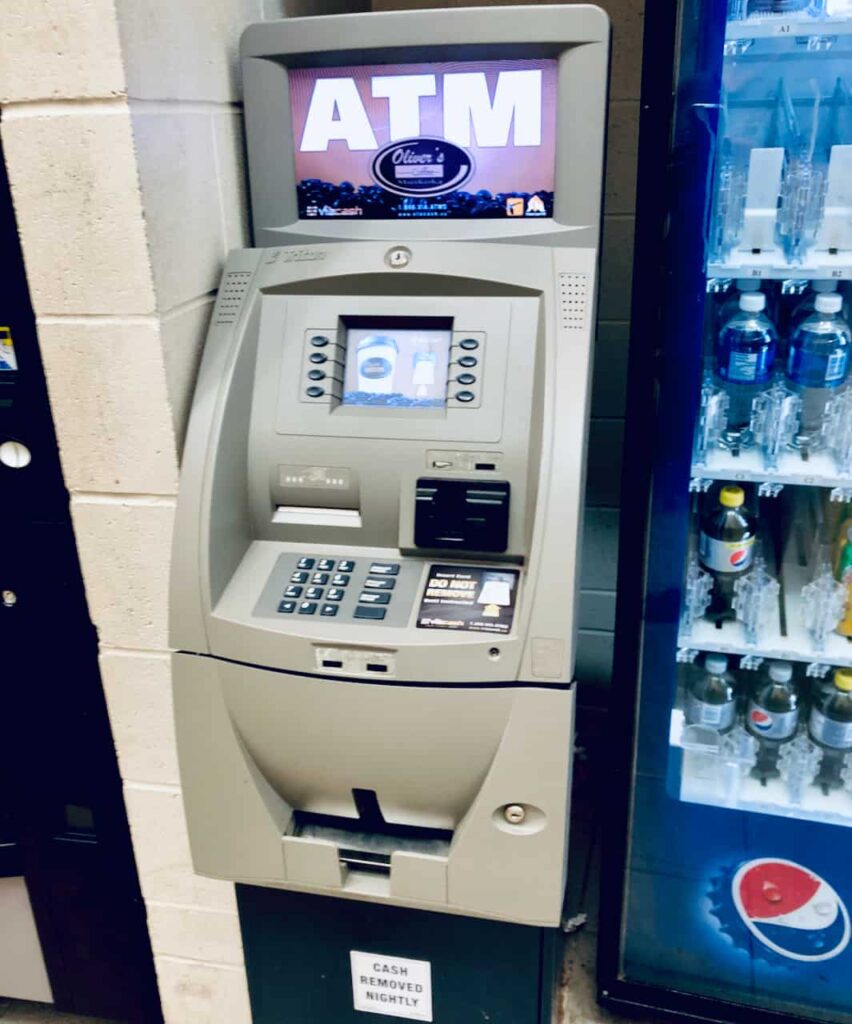[ad_1]
This article/post contains references to products or services from one or more of our advertisers or partners. We may receive compensation when you click on links to those products or services
The Covid-19 pandemic has had a big impact on real estate. In some hubs, the bubble may have popped. And the explosion of eCommerce sales this year may just be the death knell of commercial real estate.
With all this doom and gloom it is easy to forget the cardinal rule of capital: Money is never destroyed; it just moves around. The world of real estate is no different. As real estate bubbles in major cities pop, new opportunities arise in the most unlikely of places.
The Death of Large Cities?
 It is not every day you see a headline proclaiming that New York City is dead. But that is exactly what the New York Post republished in an article by writer, blogger, and investor, James Altucher.
It is not every day you see a headline proclaiming that New York City is dead. But that is exactly what the New York Post republished in an article by writer, blogger, and investor, James Altucher.
New York City faces a bleak reality, according to Altucher. It’s a city long past its glory days and there is no reason for people to stay. Due to the pandemic, many career opportunities have evaporated, offices stand empty and more people than ever, even locals, are moving away.
Whether all of this is accurate or anecdotal is hard to tell. But it’s impossible to ignore the impact the pandemic has had on big city life in general:
- Many of the white-collar jobs that attracted so many to New York City, San Francisco, and other big cities can now be done from home.
- Most workers are happier working from the comfort of their apartments.
- And now companies can downsize office space and save money on skyrocketing costs.
Many companies and workers will still prefer the new normal once cities start opening up again. So if someone can work from home and wants to leave a big city, where does he or she go? And what does that mean for investors looking to put money into real estate?
Introducing Zoomtowns
A “zoomtown” is any small town that grows rapidly. Workers who are allowed to work from home realize they no longer need to live where they work. So they move away from big cities. Zoomtowns are the small towns across America that have a much lower cost of living and the same or better quality of life.
The biggest victims of the Zoomtown phenomenon are the major commercial hubs. These places saw the cost of living skyrocket in recent years, yet their status as job and financial hubs kept them growing.
As more and more workers and employers accept the new work-from-home culture, the demand for real estate in zoomtowns rises to keep pace with the influx of workers. And this leads to real estate prices dropping in the major hubs as they increase in other areas of America.
Local governments soon saw their surging popularity and now offer special benefits for incoming residents. And some cities have launched new marketing campaigns aimed at highlighting the things they have that large cities don’t, namely low pollution, tranquility, wilderness, etc.
Booming Zoomtowns
So where are these zoomtowns? Let’s find where they are and what they have to offer both potential residents and real estate investors.
Wyoming
 If someone were to ask you to name the crypto capital of the U.S., we wager you’d say San Francisco or Austin. But what about Cheyenne, Wyoming?
If someone were to ask you to name the crypto capital of the U.S., we wager you’d say San Francisco or Austin. But what about Cheyenne, Wyoming?
If you haven’t heard of this bustling little zoomtown don’t feel bad. Barely anyone has. But a cryptocurrency commercial bank opened there in September 2020.
Wyoming was originally a coal state, but years of declining revenues from that industry forced the state to reinvent itself for the modern age. It quickly set about signing into law some of the most crypto-friendly legislation in the country. These include exempting cryptocurrency profits from state taxes. Of course, this has attracted waves of companies and entrepreneurs in the crypto space.
California
 You don’t have to look at Middle America to see the zoomtown effect. You can see it in the same states that have famous metropolises. Suggesting California as a zoomtown location may seem surprising considering how much bad press Los Angeles and San Francisco get for sky-high prices. But remember that California is a huge state.
You don’t have to look at Middle America to see the zoomtown effect. You can see it in the same states that have famous metropolises. Suggesting California as a zoomtown location may seem surprising considering how much bad press Los Angeles and San Francisco get for sky-high prices. But remember that California is a huge state.
Truckee, California — a sleepy village of 16,000 — flew under most people’s radars. In fact, it was mostly known as a stopover town for San Franciscans driving to Lake Tahoe. Now with the pandemic, it has seen its median home price increase over 50%. Many tech workers from Google, Facebook and Apple chose to move closer to their favorite retreat permanently.
And this phenomenon isn’t unique to California. The Catskills of New York is enjoying a huge boost from the exodus from New York City, where Manhattan has been described as a “ghost town” compared to its pre-pandemic glory.
Montana
 Reports out of the town of Missoula, Montana — a town of 70,000 situated between wilderness and rugged mountains — show that one out of every four real estate transactions is from an out-of-state buyer. Most of the buyers are coming from surrounding states but some come from as far away as Texas and California. These buyers no longer feel the need to pay their state’s comparatively high taxes when they can continue enjoying their high salary in a beautiful low-cost locale.
Reports out of the town of Missoula, Montana — a town of 70,000 situated between wilderness and rugged mountains — show that one out of every four real estate transactions is from an out-of-state buyer. Most of the buyers are coming from surrounding states but some come from as far away as Texas and California. These buyers no longer feel the need to pay their state’s comparatively high taxes when they can continue enjoying their high salary in a beautiful low-cost locale.
Are Zoomtowns Here to Stay?
The data is clear: For the first time in a generation, population increase in rural communities is far outpacing that in metropolitan areas. In some of these communities, the demand for real estate is pushing prices faster than many have ever seen.
This increase in value presents a much more attractive yield-to-price rental real estate investment opportunity when compared to big cities, where astronomical prices have squeezed the yields to historically low levels.
The trend may have begun due to the forced work-from-home environment. But many issues that were bubbling beneath the surface — including high taxes and low quality of life — seem to also be driving these moves. Regardless of the motive, a Gallup poll showed that over half of employees worked remotely all the time during the height of the lockdown. And even in October 2020, one-third still worked remotely all the time.
How Investors Can Take Advantage of Zoomtowns
As we have shown above, interested investors should look for locations that share a few common traits. These include being small, in or near a popular getaway spot, and having governments with friendly policies to encourage migration from outside buyers.
Rents in cities like San Francisco and Manhattan have fallen while they’ve risen in places like Phoenix and Memphis.
Many of these sprouting zoomtowns are small locales with a naturally low inventory of available homes. So prices have spiked much faster than in major cities. Take for example Truckee, California, mentioned above — its median home price is up 20% from a year ago.
An Actionable Zoomtown Investment Plan
If you want to take advantage of the rise of zoomtowns, here’s what to look for.
- You should keep an eye out for any towns or states pushing legislation to attract more out-of-state immigration. From there, start looking through Google Maps and ask yourself, “What small towns are near a popular getaway spot where someone might like to live?”
- You should be able to find a number of such towns in a few states. Then it becomes old-fashioned research. We list a few tools below that you can use to find data on recent changes in median home prices or number of real estate transactions. This should give you a good idea of what’s happening.
- Then do some “on the ground” research, since data from many of these smaller towns can be unreliable. Call up local real estate offices that know the area. Look into message boards and groups specific to the town and see what they are discussing. You would be amazed how far ahead of the competition you can get just by doing a bit of research.
- Now it is up to you to look at the yield-to-price ratios and make up your mind on whether this is an attractive investment for your financial goals.
Online Tools to Help Your Search
There are a number of sites that make collecting real estate data easy. As mentioned above, by using these you will be able to find critical information to see if a location is starting to boom.
- One of the most famous is Zillow, great for locales that are close to major hubs, locales such as the Catskills, the Hamptons, and Truckee.
- Another terrific website for real estate transaction data is Redfin. This site uses proprietary data from its own listing service to generate accurate reports of what’s going on.
Pros and Cons of Investing in Zoomtowns
- A much more attractive yield-to-price ratio
- Lower down payments than on similar sized apartments in large cities
- A chance for a large price appreciation
- These investments require more research
- Low inventories mean prices can spike rapidly before you invest
- As with any nontraditional investment, you’ll need to take some risk
What Is Next for Zoomtowns?
Ecommerce has rapidly disrupted and threatened every big box retailer in America. This trend of technology disrupting traditional industry won’t be slowing down as our rate of innovation only speeds up.
Real estate is no different. The technological tools that allow us to work from home weren’t available even just 15 years ago. So, many of these real estate opportunities in zoomtowns wouldn’t have been available either.
Investing directly in zoomtown rental real estate isn’t the only way to bet on tech disrupting real estate markets. Large areas of once-cheap, unproductive land are being rapidly bought up and converted into data centers or cryptocurrency mining operations.
The opportunity is always out there, we just need to keep our eyes and ears open and follow where the money is going.
View the original article at here.
Investor Junkie
investorjunkie.com



